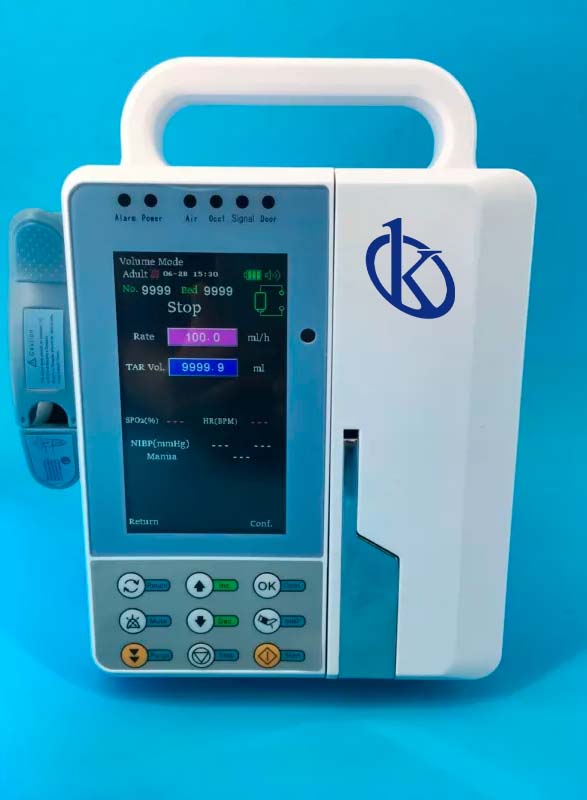Infusion pumps are medical devices that are used in order to generate mechanical pressure to move a fluid through a tube towards the patient’s vascular system, thus allowing the administration of medicinal fluids with more precision. This medical equipment plays a fundamental role in the technological devices that are used in a surgical operation, especially in the induction and maintenance of total intravenous anesthesia, but also in the administration of necessary medication for the patient while he is in the operating room in the operating room
Types of infusion pumps
There are different types of pumps to control infusions, which are used in specialized care areas:
- Positive displacement pump: This type of infusion pump is the most used since cassette pumps and syringe pumps are also found in this category. The first ones have a chamber integrated into the cassette and a valve that allows the liquid to reach this chamber during a pause in pumping and when it restarts, the valve closes and sends the liquid to the patient, instead of it returning to the patient. the bag.
- Peristaltic linear pump: Several modifications have been made to this infusion pump’s design in order to offer levels of precision similar to the previous one. Pumps of this type put more pressure on the equipment to increase the accuracy of the infusion.
- Rotary peristaltic pump: This infusion pump is used for the intravenous application of some medications, but its use is more common in the administration of food, as is the case with parenteral nutrition. Likewise, it is used for the infusion of blood in the operating room, during the placement of a bypass or the separation of cells from the plasma.
Uses of the infusion pump
The use of infusion pumps dates back to the late sixties and from then until today, these medical devices continue to be used continuously in the health sector. The introduction of these devices facilitated the administration of parenteral solutions and blood transfusions, since before their appearance, the flow of fluids had to be monitored to achieve precision in the process, but this was not entirely functional because it postponed the patient recovery
Infusion pumps are used for their ability to administer medications and solutions at high pressures that cannot be achieved with manually operated or gravity-dependent equipment, such as during intra-arterial drug administration, or very rapid flow of solutions during resuscitation. (200-1000ml/h).
There are many clinical situations where infusion pumps have been shown to be much more efficient than traditional methods of drug delivery. They are very useful in the application of intravenous inotropes, parenteral and enteral feeding solutions, chemotherapy, epidural analgesics, subcutaneous insulin administration, and autotransfusion. HERE
What do we offer you at Kalstein?
At Kalstein we are manufacturers of medical equipment at the best prices on the market, and that have innovative designs with the highest technology. Therefore, we put at your disposal our new YR05164 infusion pump, which has the following characteristics:
- 4.3-inch color LCD display with backlight suitable for working in various ambient light conditions.
- Infusion monitoring system (optional), the status of each pump is displayed in real time at the central station through wireless transmission.
- Displays time, battery, infusion status, mode, rate, target volume, accumulated volume, target volume, sound volume, pressure, department, bed number, I/V set, drug temperature.
- They allow greater accuracy in the rate of dripping than gravity systems through a flow-regulating clamp.
For more information about our infusion pumps, we invite you to take a look at: HERE




